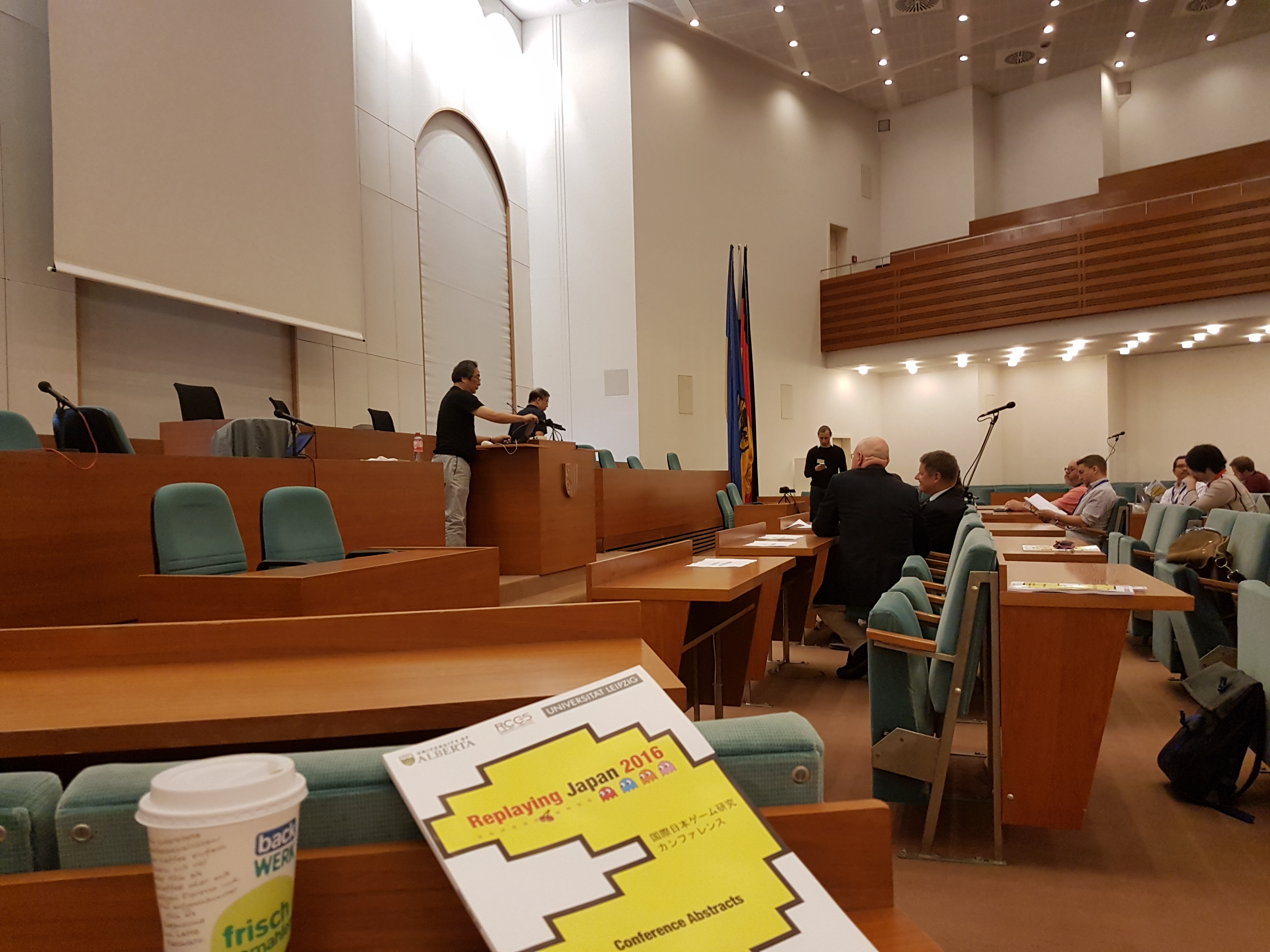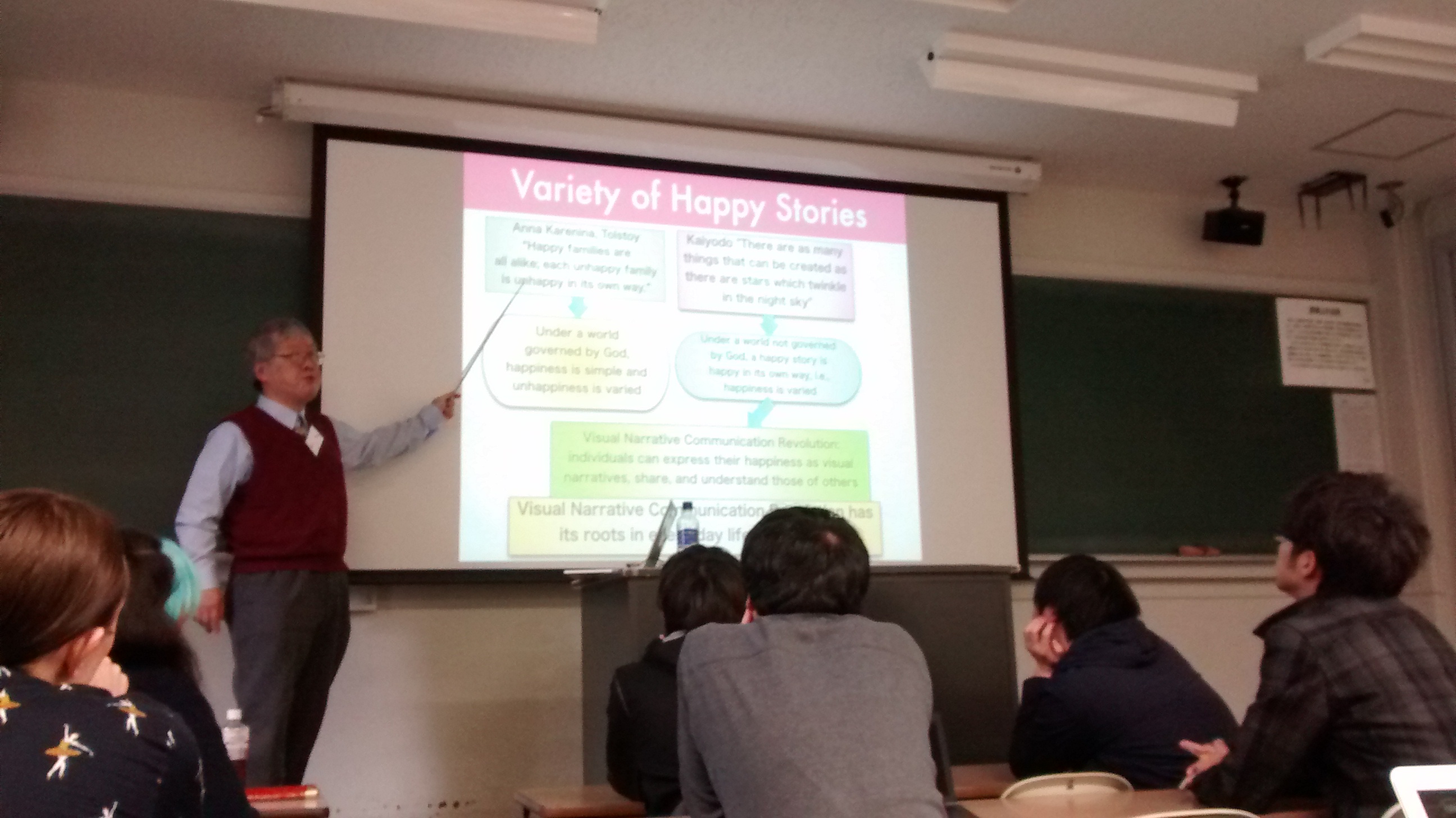
I am attending Replaying Japan 2016 held in Lepzig at the moment. This year, the conference puts emphasis on Pac-Man, Toru Iwatani’s legendary arcade video game from 1981. While I won’t be speaking directly about the game this year (my paper is about JRPG instead), I still wanted to express a few of my memories and thoughts about this important game. There is no better platform that this blog to communicate these ideas to the attendants of the conference, but also beyond to anyone interested.
When I was around 10 years old, my parents sent me to summer camp in a remote corner of rural Quebec, probably as a way to get some vacations of their own, but also to broaden my horizons beyond the monotonous everyday life of June-July-August vacation time period as a kid. There, we would do all kinds of activities, playing in the woods, at the lake or playing variations of Dungeons and Dragons. There was also a crafting session taking place in a shed in the middle of the woods, and I remember trying my hand at a papier-mâché workshop where kids had to come up with a project involving a round wireframe structure around which we had to creatively put the said piece of paper-mâché around, hopefully turning out into a ball/head structure. I ended up making a spherical structure, on which I put two eyes and a big mouth. When I declared the project done, the workshop supervisor walked towards me and said: “Oh, you made a Pac-Man!”. A what? I cannot remember the color of the whole thing, but let us say for the purpose of this story that it was a big yellow.
Of course being born in 1986, the post Pac-Man era, I had no idea what character that person was referring, and, by 1996 or so, Pac-Man was no longer a household figure. The Pac-Man fever had come and go a long time ago. I was living in Gaspésie, and had virtually no access to video games, and, besides, the killer app of the NES was the more fledged out Mario Bros. I remember, however, that eventually we inherited from a Colecovision console form my grandmother, and one of the cartridge would turn out to be the famous porting of Pac-Man, the Colecovision’s own killer app over the Atari 2600, of which the Pac-Man port was a disastrous mess. I had no idea of what Pac-Man was at the time, but it soon slowly creeped into my life.

So the fever had come and go, but in its wake, it left of an entire generation with a rough understanding of what video games were, but most importantly, a familiar face. Pac-Man’s success was to reach a new layer of people to engage with video games for the first time. While Nishikado captured the space-themed zeitgeist of the late 1970s through Space Invaders, Iwatani created its own by providing gamers with a very different ludic metaphor, one that was easy to understand for anyone, anywhere.
Eat.
Eat.
Eat.
The game was popular in Japan, but it was in the United States that the game turned into a form of culture of its own brought forward by an endless amount of paraphernalia produced for fans wanting to bring home the spirit of the game. This was certainly instrumental into turning Pac-Man into the recognizable figure that it is still today. It amazes me that my first contact with Pac-Man was not with the game itself, but through its character that I “copy” in an art project in a cabin in the Gaspésie woods.
The question now become to what extend is Pac-Man still influencing game culture these days? What does Pac-Man mean to the younger generation now that Pac-Man is featured in many other games which often have nothing to do with the original game gameplay-wise. I am thinking of Super Smash Bros for example. We might not come up with all answers at this year’s conference, but I hope the event will trigger the community to ponder on these issues in years to come.






